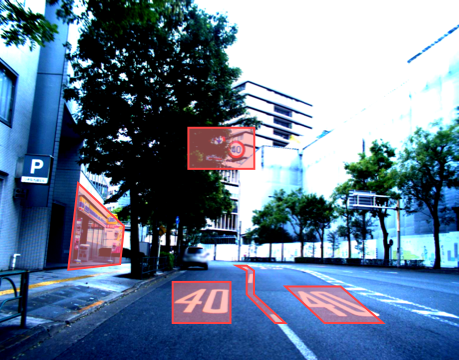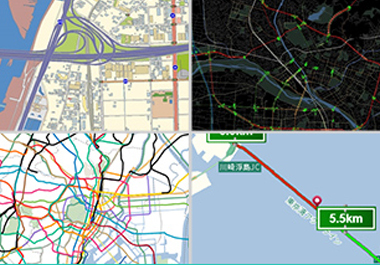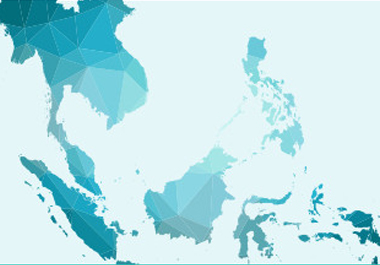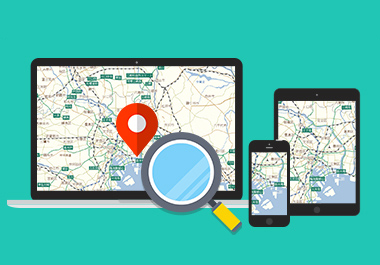ー Address Data: Digitizing and Utilization ー Everything you need to know about INCREMENT P’s approach to preparing address data!
Addresses aren’t something you probably give much thought to on a regular basis. But when you enter the address for your destination in a map app or your car’s GPS navigation system, a map of the destination (location) appears as a matter of course. This is only possible because data, what we call address data, has been input.
In this article, we will introduce you to how INCREMENT P prepares these address data and some of the ways in which they are used.

Addresses aren’t something you probably give much thought to on a regular basis. But when you enter the address for your destination in a map app or your car’s GPS navigation system, a map of the destination (location) appears as a matter of course. This is only possible because data, what we call address data, has been input.
In this article, we will introduce you to how INCREMENT P prepares these address data and some of the ways in which they are used.

What are address data?
Address data literally refer to the data base for addresses. Address data consist of an address string in text and position information using latitude-longitude coordinates.
In the case of Japan, addresses are represented by a place name (word part), as well as a block number and residence number (primarily the numbered part). Some addresses contain unusual place names, or even block and residence numbers that do not consist of actual numerals.
Meanwhile, latitude-longitude coordinates can be represented in degrees using decimal units, or in DMS using hexadecimal minutes and seconds. Although INCREMENT P manages its own unique values converted into integers, we also support both the degree and DMS systems.
This combination of address and latitude-longitude coordinate-based position information serves as address data, which are linked to a digital map.
INCREMENT P manages more than 40 million sets of address data for our digital maps. In fact, we assign an address to every building. The reason the address you are searching for using your car’s GPS navigation system or smartphone map app usually appears without issue is because these address data have been input.
Going to a friend’s house for the first time, a client’s office, or receiving a delivery for an online shopping order–these are just a few of the many instances involving addresses where the address data input into maps play a useful role.
INCREMENT P’s work: How do we create address data?
INCREMENT P manages more than 40 million sets of address data. These address data are constantly updated based on the information we collect through various channels (sources).
One of the main channels for collecting information on addresses is naturally the local government.
Every year we convert various types of information into address data, including everything from high-volume data, such as address reorganizations (changes in address notified by municipalities) that can reach into the hundreds of locations and major changes to addresses as with new housing developments, to small-volume data, such as changes in an address for a single house.

In addition, we prepare address data for each newly constructed building based on information from the local government, as well as information from each facility.
Even in a world where digital information has become the mainstream, information on addresses that is closely linked to local government information is still often only available in the form of paper documents. The formats and details of these documents managed by local governments vary widely, and some of them are even written by hand.
Creating address data therefore requires both knowledge of Japan’s unique addressing system, and the ability to accurately read and understand this wide variety of documents.
Without this ability to read and understand, our data would lead you to the wrong location, prevent your packages from being delivered, or invite some other unfortunate outcome.
We therefore proceed by carefully checking each and every address. These everyday tasks involved in preparing address data support those map functions that rely on addresses.
INCREMENT P Address Data Feature 1: Hierarchized address data
One feature of INCREMENT P’s address data is that we have hierarchized it according to the way in which Japan notates its addresses.
Hierarchization refers to our approach of managing these data by breaking down addresses into their individual elements, such as prefecture/city/town, oaza/district, aza/block number, and residence number, for example.

Despite the fact that some addresses in Japan also contain unusual place names, such as the unfamiliar street names of Kyoto, properly converting these into hierarchical data makes them easy to use.
Because hierarchized address data maintains its individual elements, when employing a sales management tool to look up sales information by region, for example, this allows you to easily extract the information you need on a specific basis, such as for a certain prefecture, city, or town.
Managing addresses in a hierarchized format also allows us to correct erroneous addresses or remove addresses that do not exist. Although relying on address cleansing, which we will describe later, the ways in which address data are used have been expanding along with the recent growth in demand for e-commerce and online shopping.
INCREMENT P Address Data Feature 2: Multilingual support in English, Chinese, and Korean
Another feature of INCREMENT P’s address data is that it offers multilingual support. We offer support for English, Chinese (simplified and traditional), and Korean, and have prepared our address data in each of these languages.
Multilingual support for address data cannot be achieved through simple word translation, transliteration, and conversion to Chinese characters alone, however.
For example, the official spelling for Gunma Prefecture uses “GUNMA” instead of “GUMMA.” In English, the spelling “GUMMA” is the name of a disease, which may cause a misunderstanding among foreigners.
<Reference> About Gunma Prefecture notation https://www.pref.gunma.jp/04/c3610022.html
When using address data in a language other than Japanese for applications that target inbound visitors or foreign residents, we must therefore use well-prepared address data.
Using address data in e-commerce: Address cleansing system
Address data are required when searching for addresses and displaying the results on a map. More recently, address data are also used for e-commerce and online shopping.
E-commerce and online shopping services are convenient in that they allow us to select and purchase products from a website, and have them delivered to our home or a designated location. Given the current situation, demand for these services has only increased in recent years. Entering the wrong delivery address, however, can prevent items from arriving and cause problems.

Using address data allows us to employ entry forms, like that shown above. There is always a risk that the user will enter their address incorrectly if they are required to do so manually. One approach to preventing mistakes when entering addresses is to have the user select their address from a list of correct options that correspond to a set of actual addresses. For example, you might have the user select their town or city from a list that corresponds to the prefecture that they already selected, and then have them select from a list of addresses that appears after selecting their town or city.
If the address entered on the form is incorrect, the product will not be delivered to the user. In fact, most of the time, an erroneous delivery address will only be discovered when the delivery driver cannot find it.
Not only will the product fail to arrive and cause trouble, but this will also result in extra shipping costs.
To avoid these problems and unnecessary costs, it is important to ensure that the user correctly enters their address when filling out these forms.
Using address cleansing system to prevent mistakes when entering an address can solve problems such as products not being delivered, and prevent extra shipping costs when a driver is unable to find the delivery destination.
Learn more about address cleansing here >
In this article, we introduced how INCREMENT P creates address data base, and several ways in which these are used, some of which include searching for addresses on a GPS navigation system or smartphone, or when an order placed online is shipped to your home. Map functions that rely on addresses are supported by an enormous volume of address data exceeding 40 million items, as well as the preparation of these address data.
The next time you have the opportunity to search for an address, we hope you will remember the role that address data play in allowing you to do so.
Click here to contact us for inquiry of map database and services.










